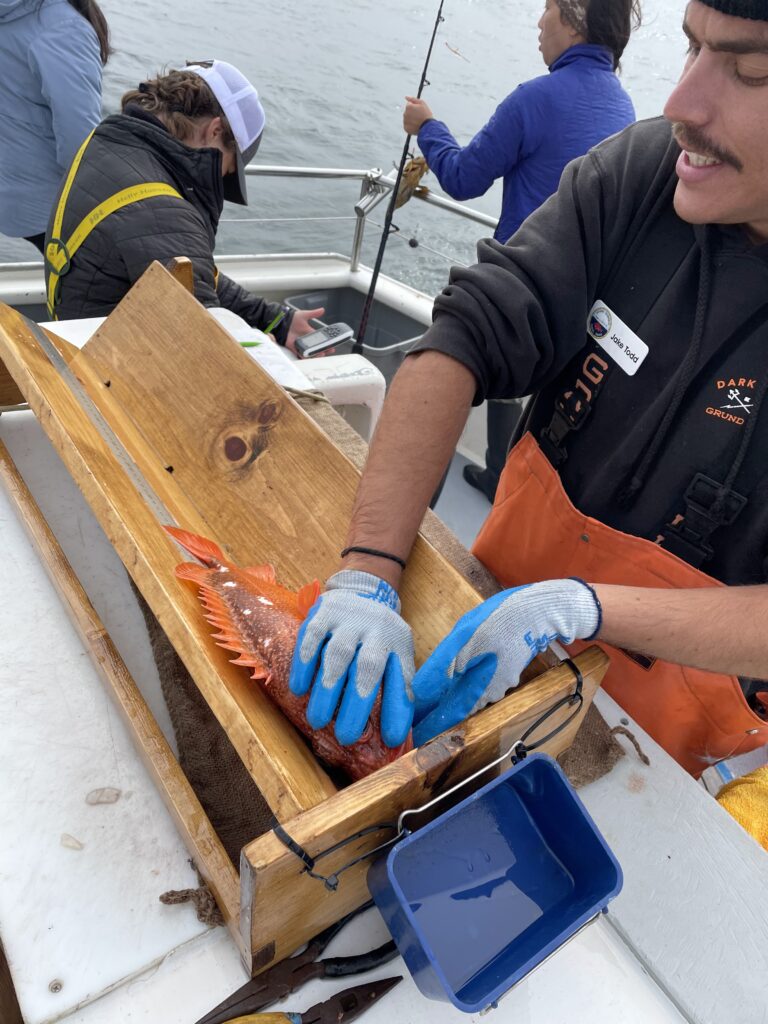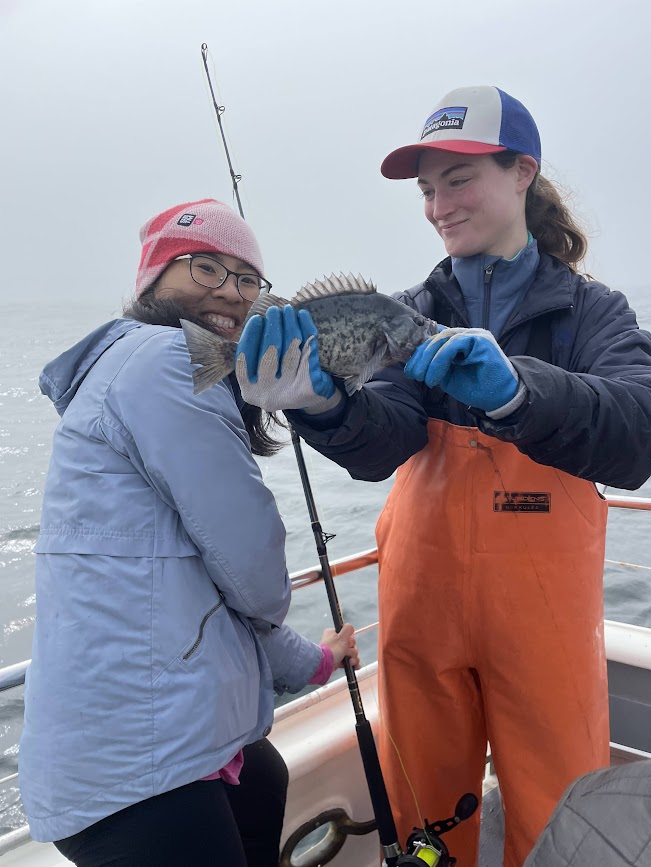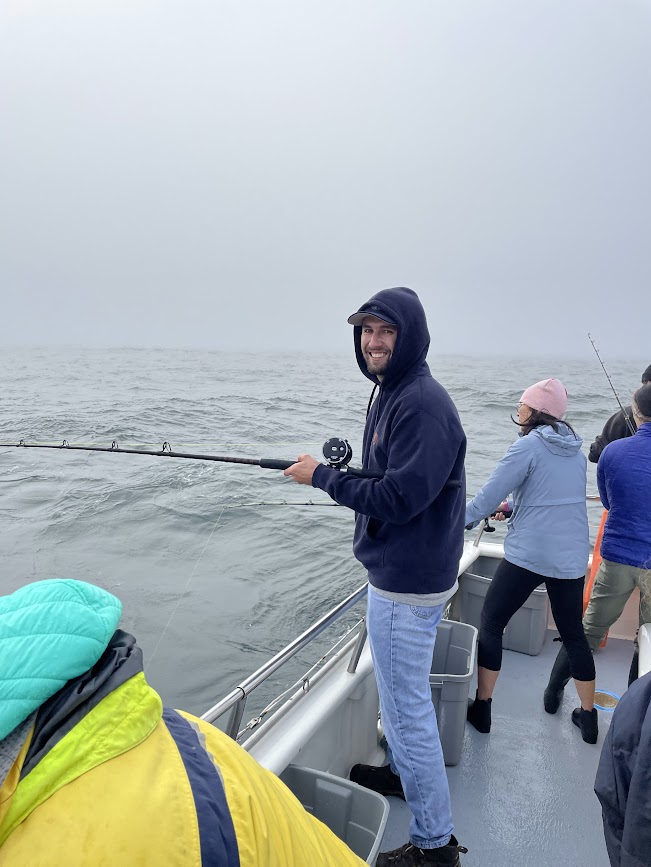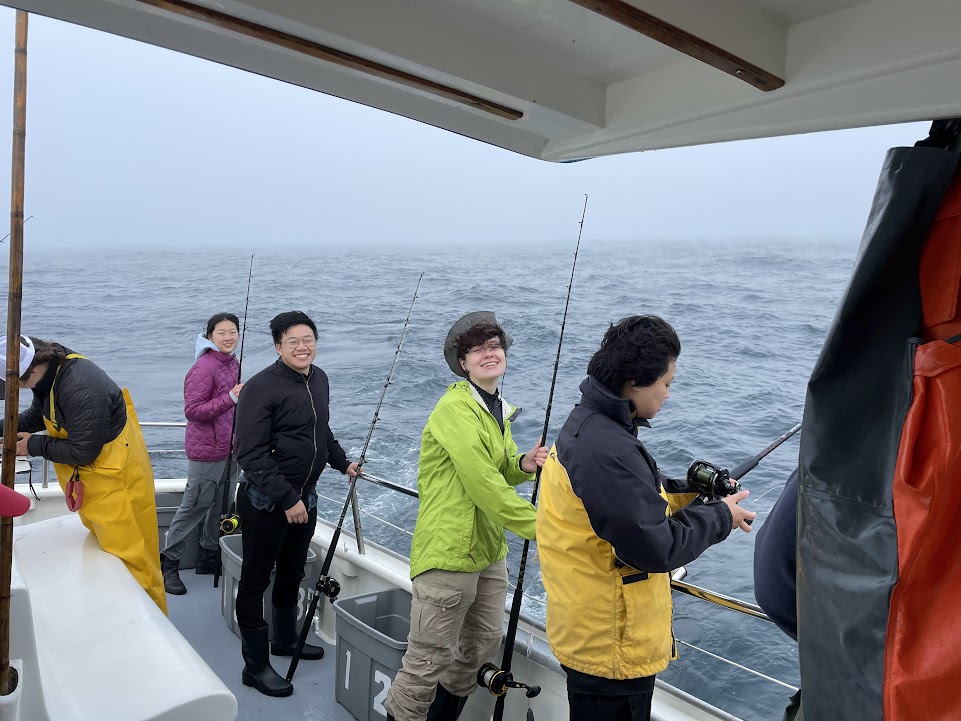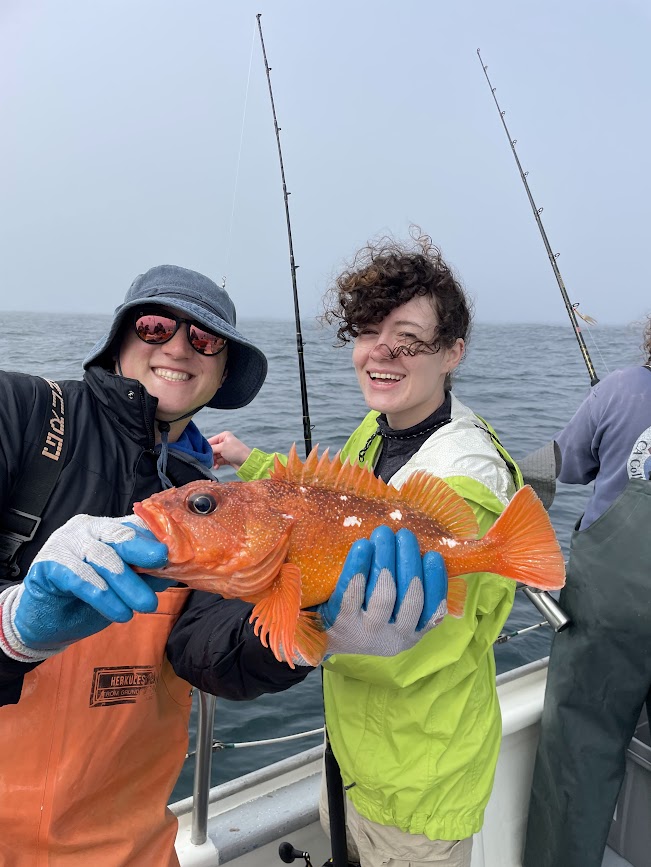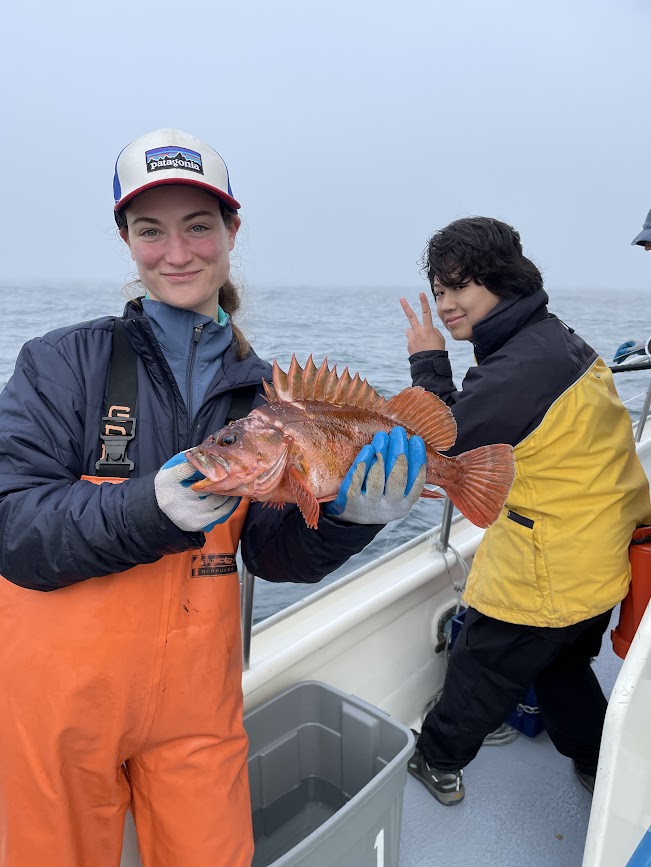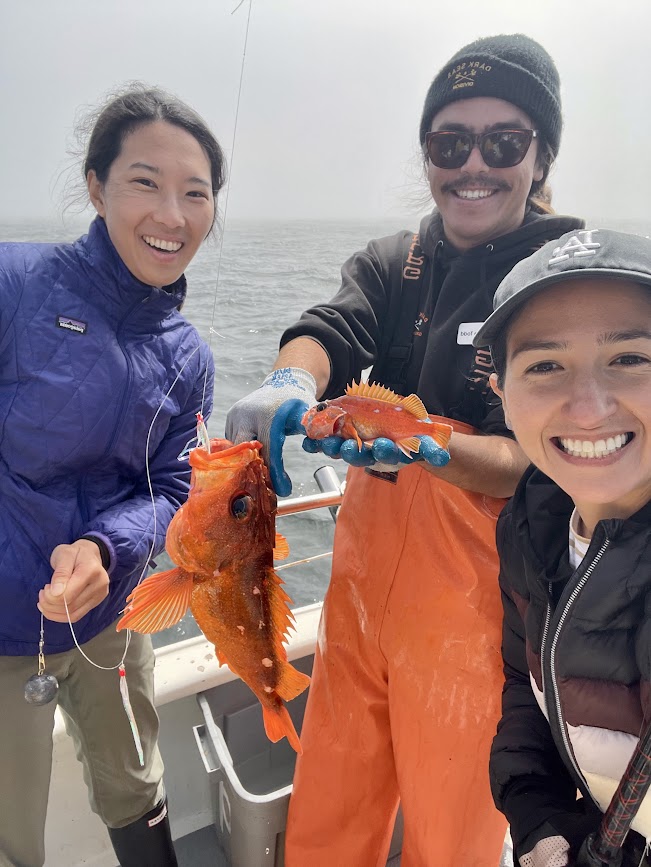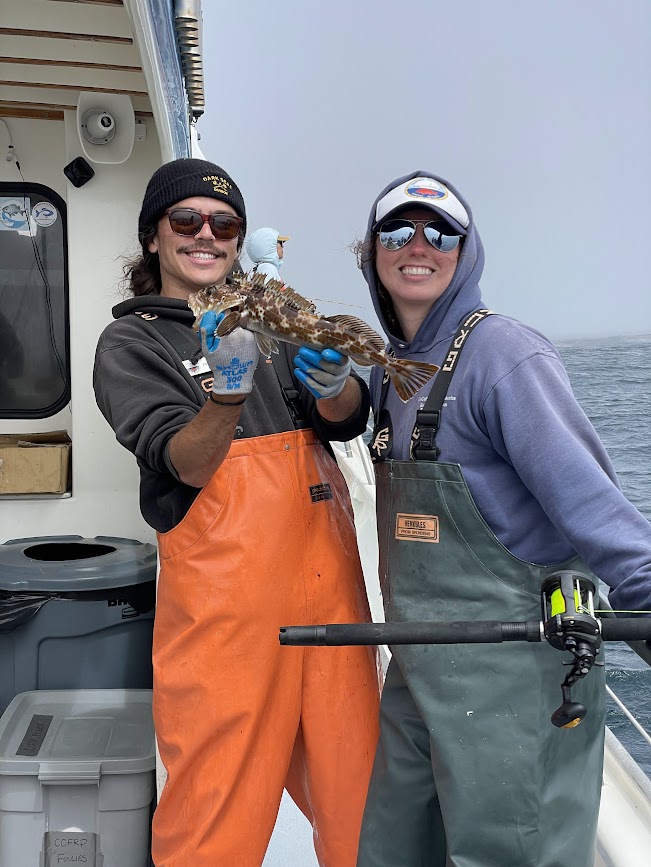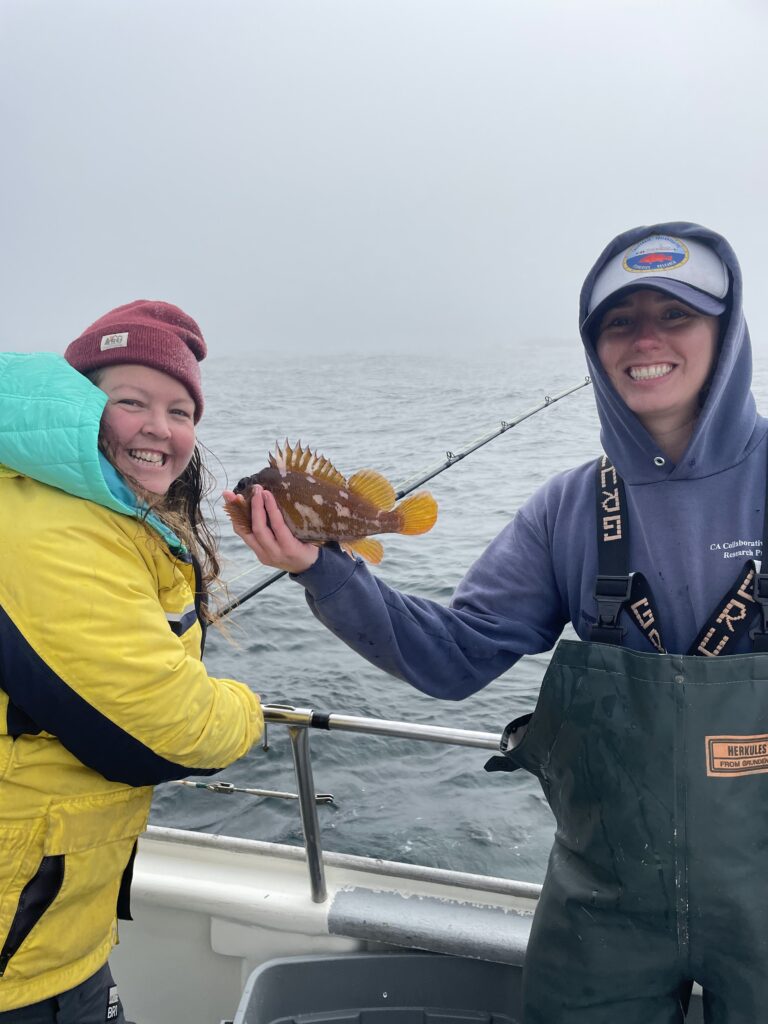A Day of Science-Based Fishing on California’s Central Coast
It was that time of the year again when the dedicated team of OPC staff and interns eagerly joined forces with the California Collaborative Fisheries Research Program (CCFRP) for an eventful day of science-based fishing along California’s picturesque Central Coast! The team of six OPC staff members and four summer interns, accompanied by passionate volunteer anglers, Captain Joey, and his trusty deckhand Calvin, embarked on the F/V Kahuna with the remarkable CCFRP research team just before sunrise at Moss Landing Harbor. Their mission? To conduct a full day’s work of catch and release data collection, delving into the effects of Marine Protected Areas (MPAs) on fish populations.
The journey began with a weather warning from Captain Joey and CCFRP Manager, Jake Todd, about the anticipated turbulent water conditions due to windy weather. Thick marine fog and swirling winds uplifted the swell, creating choppy waters that posed a challenge for navigation. As the crew set their sights on the Point Lobos MPA, they realized the conditions were too risky to enter the area. In response, they quickly adapted their plans, making the savvy decision to collect samples just outside the MPA boundary.
Jake Todd, the CCFRP Manager, shed light on the Central Coast Research team’s meticulous approach to data collection. With a focus on the summer months, they conduct a total of 12 sampling trips annually. Their aim is to have three data collection trips each week, following this structure: a day of fishing within the MPA, a day of fishing outside the MPA, and a day split in half—half within the MPA and the other half outside the MPA. This strategic approach allows them to compare the differences between fish caught within the protected areas and those caught outside of the MPA.
The research has yielded intriguing findings, highlighting that fishing effort outside the MPA was the most significant variable explaining MPA effects on fish biomass. Fish biomass, which refers to the total weight of a particular species in a given area at a specific time, provides crucial insights into trophic structure and overall fish reproductive output. So far, the research from fishing efforts at Point Lobos MPA has shown that fish biomass is higher within the MPA compared to outside its boundaries.
Given the challenging marine conditions, it was no surprise that the fishing pace was slower, with a total of 208 fish caught throughout the day outside the MPA (compared to the impressive counts of over 500 fish caught inside the MPA during previous trips). Despite the lower numbers, the team relished the adventure on board, enjoying exciting catches and gaining a newfound appreciation for developing “sea legs”!
The day spent with CCFRP was nothing short of exhilarating as the team braved the rough seas, collected valuable data, and explored the intriguing impacts of MPAs on fish populations. Their dedication to science and commitment to environmental research continues to make a positive impact on the conservation and sustainability of California’s marine ecosystems.
Gallery

